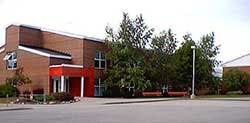The Lincoln Akerman School in Hampton Falls, N.H., has an enrollment of about 260 students in kindergarten through eighth grade. The water system serving the school has an average daily flow of 2,000 gal and is rated for 30 gal per minute (gpm). Groundwater tests revealed high concentrations of arsenic (19 ppb), iron (1.5 mg/L) and manganese (0.30 mg/L).
In order to meet the new maximum contaminate level for arsenic (10 ppb) the school system needed an effective treatment solution to reduce the arsenic concentration levels to below the EPA (MCL).
In need of a change
The school needed to find a turnkey, stand alone system for arsenic, iron and manganese removal to meet secondary and primary drinking water MCLs.
AdEdge Technologies, Inc. was selected by the Hampton Falls School District to design and fabricate a full-scale AD26 arsenic and iron treatment system for the Lincoln Akerman School. The system was selected over the other options including manganese greensand. No pilot testing was deemed necessary for the AD26 system, based on successful performance of the technology at a U.S. EPA full- scale demonstration site in Springfield, Ohio. AdEdge and its team, including Lewis Engineers and Gilford Water and Well Co., prepared the design documents and obtained all regulatory permits from New Hampshire Department of Environmental Services (NHDES) to install the treatment system to meet the performance objectives.
A system that works
The AdEdge AD26 oxidation/filtration treatment system consists of a completely integrated packaged and skid-mounted treatment system capable of treating up to 30 gpm design flow. The system consists of two 16-in. diameter vessels in parallel, control valves, pressure gauges, flow meters, and the AD26 oxidation/filtration media.
The system includes a chlorine feed module prior to the treatment system to enhance the process for simultaneous removal of iron, arsenic and manganese. Raw water is pumped from the groundwater-supply well through the treatment unit, to pressure (hydro pneumatic) tanks, and then subsequently to the distribution network.
The system has been used in many small community and non-community public water system applications and residential applications throughout the U.S. and Canada. The system’s media is certified under NSF Standard 61. The modular treatment system is also equipped with automatic controls, backwashing features, switches, gauges, flow meters, and sample ports for a complete functioning packaged unit. The arsenic, iron, and manganese is removed in a single process step.
Visible results
Since commissioning the system in early August 2006, the system is treating approximately 4,000 gpd; weekly test results indicate removal of iron and arsenic to below detection ( <0.03 mg/L arsenic). NHDES has recognized the treatment technology as a viable iron/manganese removal system design for New Hampshire sites.
